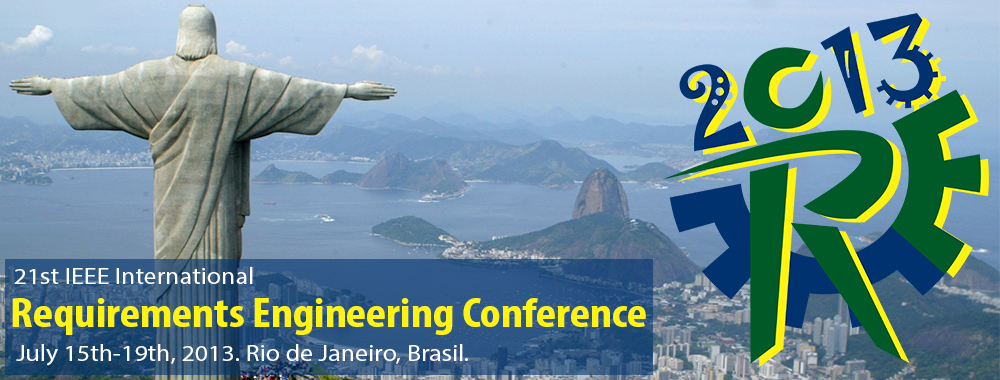What is the "Industry Readiness" of the RE'13 Research?
"Technology Readiness Level" is a measure that is commonly used by many of the world's major companies to assess the maturity of evolving technologies prior to incorporating them into a system or subsystem. A new technology is generally not suitable for immediate application when first invented or conceptualized, and is subject to experimentation, refinement, and increasingly realistic testing. [Paraphrased from http://en.wikipedia.org/wiki/Technology_readiness_level]
For RE'13 purposes, we consider the industry readiness of the concepts (1) described in our research papers. The authors of RE'13 research papers have therefore used the levels below to self-assess where their research fits on an industry-readiness scale. Most of the technical solution papers, many of the scientific evaluation papers, and all of the posters have an assigned level. We hope that this extra information will be of particular interest to industry participants at the conference and will be useful to seed discussion on technology transfer with the authors/presenters.
Level 0. Basic principles observed and reported
(i.e., the lowest level of industry readiness, but the groundwork for concept development is in place)
Level 1. Concept and/or its application proposed, with supporting evidence from the literature
(i.e., speculative, but with scientific foundations)
Level 2. Concept and/or its application proposed, with supporting evidence from the literature AND industry supplied data
(i.e., speculative, but with BOTH scientific and empirical foundations)
Level 3. Applicability and validity of the concept described analytically
(i.e., partial proof of concept, through theory and/or argument only)
Level 4. Applicability and validity of the concept described analytically AND experimentally
(i.e., full proof of concept, with initial evidence empirically provided via experimentation or worked demonstration)
Level 5. Concept used and validated in a hypothetical study
(i.e., through prototype and/or pilot study in a stand-alone and relevant simulated and/or "lab" environment)
Level 6. Concept used and validated in multiple hypothetical studies
(i.e., through prototypes and/or pilot studies in various representative and stand-alone simulated and/or "lab" environments)
Level 7. Concept used and validated in a real industry setting
(i.e., through test and demonstration in a single realistic operational working environment)
Level 8. Concept used and validated in multiple real industry settings
(i.e., through test and demonstration in varied realistic operational working environments)
Level 9. Concept used and proven repeatedly in industrial practice over an extended period of time
(i.e., a fully mature concept)

(1) Note that the term "concept" can apply to an RE model, technique, method, process, and/or tool. The definitions below are derived from the IEEE Standard Glossary of Software Engineering Terminology fused with those of BusinessDictionary.com:
RE Model: A graphical, mathematical (symbolic), or physical representation (or simplified version) of a concept, phenomenon, relationship, structure, system, or an aspect of the real world.
RE Technique: A systematic technical or managerial procedure, formula, or routine by which a (single) task is accomplished.
RE Method: An established, habitual, logical, or prescribed practice for achieving certain ends with accuracy and efficiency, usually a step-by-step sequence of activities or course of action (with definite start and end points) that must be followed in the same order to correctly perform a task.
RE Process: A sequence of interdependent and linked steps performed for a given purpose. At every stage, the steps consume one or more resources to convert inputs into outputs, these outputs serving as inputs for the next stage, until a known goal or end result is reached.
RE Tool: An item or implement used for a specific purpose. Usually, a physical object such as a mechanical tool or a technical object such as a software program.



